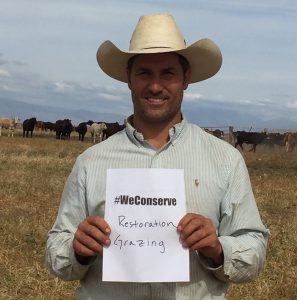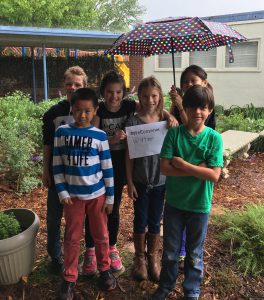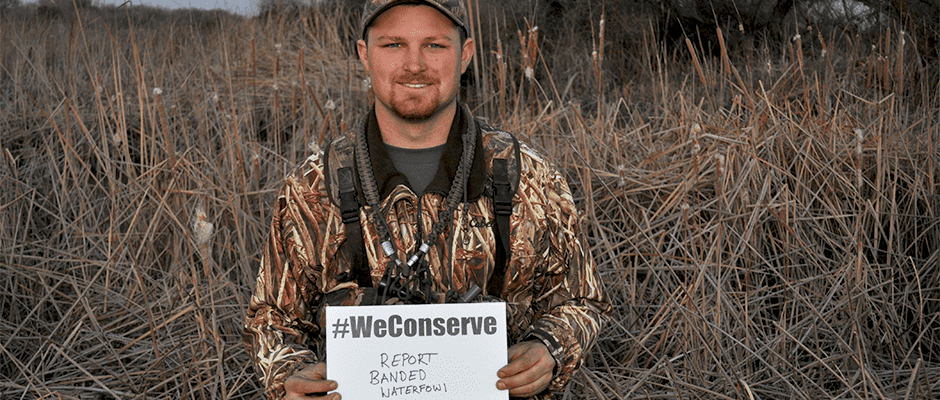Share this article
We conserve—but we don’t do it alone!
With a history that can be traced back to the late 1800s, the U.S. Fish and Wildlife Service is the nation’s premier government agency responsible for wildlife and plant species conservation. Although the name and organizational structure changed over time, the core driver of the agency remained constant: conservation. The Service works closely with a variety of partners to conserve, protect, and enhance fish, wildlife, and plants — as well as their habitats — for the continuing benefit of the American people. Earth Day is an important reminder that no individual government agency, organization, or person can do it alone. Partnership is central to progress and partners from all sectors are making a difference.
Nick Etcheverry, a co-owner of family-owned Eureka Livestock, LLC, is a critical partner for the Bitter Creek National Wildlife Refuge, a model of effective mix-use of public lands. For the past three years, his organic natural/grass-fed SimAngus cattle have grazed designated portions of the refuge, creating much needed habitat for the endangered giant kangaroo rat. The partnership began during California’s well-documented drought and has benefitted the refuge, the species and Eureka Livestock, LLC.

Nick Etcheverry’s partnership with the Service helps to establish and maintain important habitat for endangered species.
According to Etcheverry, Bitter Creek provides a sustainable food source for the herd of approximately 100 cattle grazing in this San Joaquin valley oasis. “During the drought years, the refuge saved us. I would have had to sell all those cows. I didn’t have anywhere to go and the alfalfa was so high — alfalfa’s cheap right now, but four years ago it was insane,” said Etcheverry. He is committed to conservation and knows this partnership is having an impact on endangered species. “My dad and I, we’ve been grazing on endangered and other species habitat for the last 40 years and we do care about it. It’s not just all for us and the benefit of my cows. I want the elk, and the kit fox and the kangaroo rat; I want everybody out there.”
In the United States, wildlife conservation links hunters, anglers and the industry they support with educated and trained natural resource management professionals. In fact, hunters contribute hundreds of millions of dollars to support wildlife management programs, the purchase of lands open to hunters, and hunter education and safety classes. The revenue generated through the sport of hunting supports conservation programs that benefit hunted and non-hunted wildlife species. Avid sportsman Wyatt Milne understands the complex relationship between hunting and conservation, “We always try to educate non-hunters in the sense that what we’re doing is not bad, we’re not just out there killing everything that flies around. There’re limits, there’s regulations. We do this for a reason—it’s to conserve what we have,” he said.
Milne also educates hunters. He volunteers as a mentor to younger hunters at San Luis National Wildlife Refuge, passing along the lessons his father began teaching him when he was five. Wildlife refuges provide affordable hunting opportunities that, according to Milne, he cannot access elsewhere. “It gives your everyday working man a chance to get out and hunt. He doesn’t have to spend thousands of dollars to join a club or know somebody.”
The future of conservation depends on the engagement of the nation’s youth. Through the Schoolyard Habitat Program, the Service works with schools across the country to establish wildlife habitats on school grounds. One shining example of this effort is the Sacramento Fish and Wildlife Office’s (SFWO) partnership with Caleb Greenwood Elementary School in Sacramento, California. SFWO provided technical assistance on habitat design, development and ongoing maintenance. According to Caleb Greenwood Teacher Anna Symkowick-Rose, “The biologists were right there next to the kids when they planted, so they were helping them get out the plants, showing them how to take care of the roots, how to keep the plants high — just right there physically with them. It was really cool. They were able to tell us how big the plants would get and whether or not they would do well in the location we chose, so it was good.”

Caleb Greenwood Elementary School students use their schoolyard habitat to conserve water. ©Anna Symkowick-Rose
In 2014, the school received funding from USFWS to establish the wildlife habitat, including native grassland and woodland habitat, along with a butterfly garden. The commitment from students, teachers, and parents has been key to the sustainability of Caleb Greenwood’s project. Students were engaged in every phase of the project and continue to use the space as an outdoor classroom. “They just love it. They think it’s beautiful. They love being in it. They always find things and show me. It’s really helping them look at wildlife. It helps them get excited about learning. They just get to see so much more as a result of having this in our school that they wouldn’t get to see,” said Symkowick-Rose.
The Schoolyard Habitat Program allows teachers to enhance the existing curriculum and gives students the opportunity to witness the relationship between plants and wildlife firsthand. Students selected the plant species for the habitat based on the type of wildlife they wanted to attract. Pollinators and songbirds were a priority for the students, with a special emphasis on butterflies.
Symkowick-Rose leveraged the funding the Service provided with funding from the California Fertilizer Foundation, Sacramento Creeks Council, the Parent Teacher Student Organization and Jamba Juice to support the schoolyard habitat and a school garden. After three years, the 6,500-square foot schoolyard habitat at Caleb Greenwood is well established — plants have matured, and the target species have moved in. Affectionately referred to by students as “Miss Anna The Garden Lady,” her plans for the schoolyard habitat include enhancing learning opportunities by educating students about mulching, drip irrigation and native plants.
Join the conversation about conservation on Twitter and use #WeConserve to share your contributions.
The U.S. Fish and Wildlife Service is a Strategic Partner of TWS.
Header Image: Avid hunter Wyatt Milne supports conservation by reporting banded waterfowl. ©Veronica Davison, USFWS.








